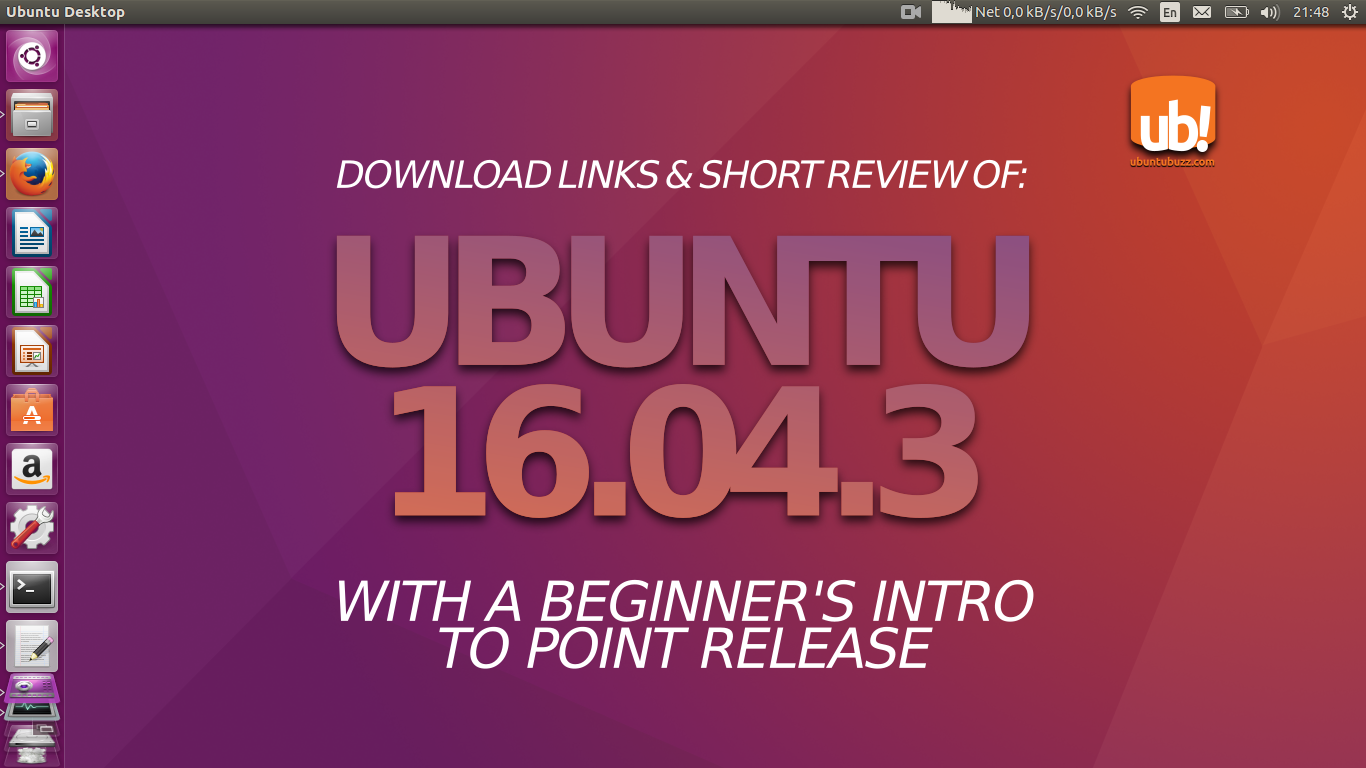

- #DOWNLOAD UBUNTU 16.04 HOW TO#
- #DOWNLOAD UBUNTU 16.04 INSTALL#
- #DOWNLOAD UBUNTU 16.04 ISO#
- #DOWNLOAD UBUNTU 16.04 PLUS#
- #DOWNLOAD UBUNTU 16.04 DOWNLOAD#
Just run this command: sudo apt-get install -install-recommends linux-generic-hwe-16.04 xserver-xorg-hwe-16.04 Download Ubuntu 16.04.
#DOWNLOAD UBUNTU 16.04 HOW TO#
The Ubuntu wiki has full details on how to get HWE updates.
#DOWNLOAD UBUNTU 16.04 INSTALL#
That said, if you made your Ubuntu 16.04 install way back in April 2016 (and you haven’t opted-in to receive HWE updates since) you will not get the new kernel or graphics stack until you opt-in.Īnd to do that you need to install the HWE kernel. If you run Ubuntu 16.04 LTS already you don’t need to do anything special to get this “release” - you’re technically running it already. You will also get the Linux kernel 4.15 as standard, out of the box. If you install Ubuntu 16.04 LTS using the installer images released today you won’t need to install as many post-install updates as those who use an older install image. Ubuntu 16.04.5 also features an updated hard ware enablement (HWE) stack composed of Ubuntu Linux Kernel 4.15 and graphics tech derived from Ubuntu 18.04 LTS ‘Bionic Beaver’.Īn updated kernel helps improve the OS’s hardware support, performance and compatibility.īelow is a chart showing the kernel support schedule for Xenial:Īs you can, this is the final major kernel update this release will get, and is supported until EOL. The updated installer helps keep fresh installs feeling fresh. The Ubuntu 16.04.5 LTS install image rolls together all of the bug fixes and security patches released to Xenial Xerius since the last point release back in March. While there’s not a lot “new” to see in a point release there is plenty of newness to feel. The next tutorial will help you to configure the Angular application behind the Apache server to serve with a domain name.If you want to do a fresh install of 16.04 LTS this is the image you should use. You have successfully installed Angular CLI and created a sample application. The IP address 0.0.0.0 listens on all interfaces and is publically accessible.

Execute the commands to do this: ng new hello-angular Now, create a new application named hello-angular4 using the Angular CLI tools. Step 3 – Create a New Angular Application Let’s check the installed version of ng on your system. Angular CLI provides a command ng used for command-line operations.

So it will be accessible to all users and applications on the system. Using the -g above command will install the Angular CLI tool globally. npm install -g 10 #Angular 10 npm install -g 11 #Angular 11 npm install -g 12 #Angular 12 To install specific Angular version run command as following with version number.
#DOWNLOAD UBUNTU 16.04 PLUS#
The end result is an updated install image that will need fewer post-install updates, plus better. Ubuntu 16.04.5 LTS combines all bug fixes and security updates issued to the OS since the last point release went live with an updated kernel and graphics stack. You may require older Angular version on your machine. The fifth (and final) point release of Ubuntu 16.04 LTS is now available to download. npm install -g latest version of Angular CLI will be installed on your Ubuntu Linux system. Make sure you have successfully installed node.js and NPM on your system node -version npm -version Step 2 – Install Angular/CLIĪfter installation of node.js and npm on your system, use following commands to install Angular cli tool on your system. sudo apt install python-software-properties curl -sL | sudo -E bash - sudo apt install nodejs If you don’t have node.js installed use the following set of commands to add node.js PPA in your Ubuntu system and install it. No installation is necessary, just download and run it.
#DOWNLOAD UBUNTU 16.04 ISO#
Download Rufus, an open-source tool to create a bootable USB drive using the Ubuntu ISO disk image you download above. Step 4: Create a bootable Ubuntu USB drive. Reference: Serve Node.js Application behind the Apache Server Step 1 – Install Node.jsįirst of all, you need to install node.js on your system. Go to Ubuntus Download page and grab the Ubuntu Desktop 16.04 ISO Image. This tutorial will help you to install the Angular CLI tool on Ubuntu 19.10, 18.04 & 16.04 Linux operating systems. It keeps track of all the components and checks regularly for their updates. Angular is an frameworks, libraries, assets, and utilities.


 0 kommentar(er)
0 kommentar(er)
